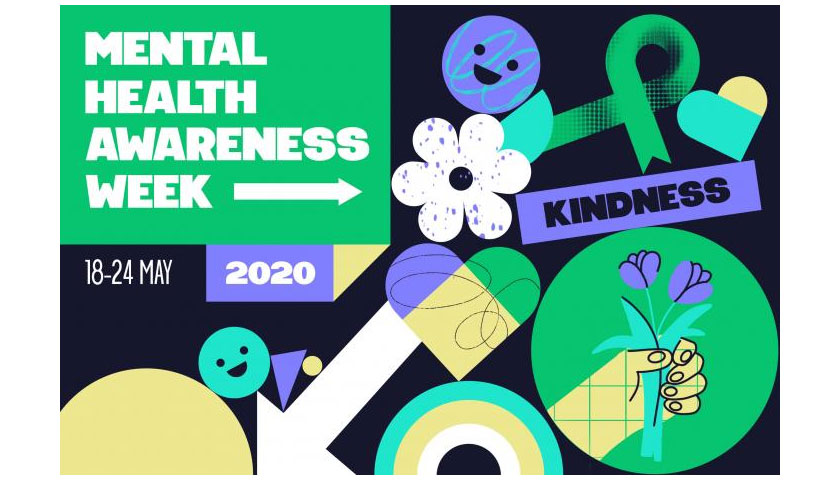 1. Inspect the premises
1. Inspect the premisesIf the property has been left completely unattended, you may find unexpected pests, damage or breakages — all of which need to be addressed before employees begin to return.
Tests to run before the premises is reoccupied might include:
These will help you identify the additional control measures and adjustments that will need to be implemented. Look at our page for further information.
Risk assessments should be carried out in consultation with employees or trade unions and should be continually reviewed and adjusted. If you require a Covid-19 risk assessment please contact us.
Will the return to work be staggered? The priority will be those employees who can’t do their job fully from home. Are there others who could continue working from home for the foreseeable future? Don’t forget to continue to support homeworkers. https://www.hse.gov.uk/toolbox/workers/home.htm
Review workplaces before employees return to the company. The following may need to be considered….
If your company are going to deep clean before the premises opens, this should be stated in the risk assessment. regular cleaning should also be documented including who is responsible for certain tasks. Identify your cleaning needs (eg more frequent cleaning, regular disinfecting of surfaces, handles, keyboards, bannisters, lift buttons, photocopiers, etc) and confirm whether your existing cleaning contractor can fulfil them.
https://walkersafety.co.uk/2020/04/deep-cleaning-workplace-time-coronavirus/
Until a vaccine is available, the organisation will need to maintain a high level of hygiene. Government guidance says employers should provide handwashing facilities or hand sanitisers at entry and exit points.
Plant and machinery will need to be inspected for deterioration, etc. If employees have taken IT equipment, office furniture or other assets home with them you will need a plan to get them back to the workplace, sanitised and checked. If the risk assessment identifies the need for personal protective equipment (PPE) to prevent COVID-19 infection, ensure you purchase appropriate PPE.
It is worth involving staff in the planning process and you should keep communications channels open with staff, customers, suppliers and other stakeholders. Once you have a plan, it needs to be communicated carefully to all employees on the understanding that it will likely need to be adjusted as you go. Aim to give employees reasonable notice of a return to the workplace so that they can arrange childcare, investigate commuting options, etc. Your employees must be confident that you are not putting them at risk by asking them to return to work, so let them know the measures you are taking to keep them safe.
For further information, please contact us.
Preparing your workplace for COVID-19 is a tricky matter. Because it is a new virus, more information is coming out nearly daily about the risks, contagion, and dangerous side effects. As lockdowns and quarantines are being lifted and people begin returning to work, preparing your workplace against COVID-19 is absolutely necessary.
Businesses need to say yes to the following three questions before bringing their workforce back into work.
Before taking any actions it’s important to take a step back and determine what the new normal is for your particular workplace. In our world, one way that is done through producing a risk assessment. Before employees step back through the door it’s important to thoroughly assess the risks. This will help to uncover potential issues and determine how to work around them, ultimately helping to keep your employees safe and well, allow your operations to continue and keep your company compliant.
Read our detailed article on deep cleaning here.
The most important aspect of preparing your workplace for COVID-19 is cleaning the building top to bottom on a daily basis. The WHO states, “Studies have shown that the COVID-19 virus can survive for up to 72 hours on plastic and stainless steel, less than 4 hours on copper and less than 24 hours on cardboard.” As even asymptomatic people can spread the virus, it is vital that surfaces are cleaned regularly. A basic, household disinfectant can kill the virus, so it’s a benefit to use one frequently.
Cleaning surfaces isn’t enough though. Hands must be washed frequently, and preferably with soap and warm water. Alcohol based hand sanitisers can be used, but soap and water are far more effective at killing germs. Once hands have been washed, be careful not to touch your face, as that can further spread COVID-19 germs. If you have to cough or sneeze, do it in your elbow or a tissue, and wash your hands right away.
These 8 guides cover a range of different types of work. Many businesses operate more than one type of workplace, such as an office, factory and fleet of vehicles. You may need to use more than one of these guides as you think through what you need to do to keep people safe.
Further guidance and information is available from Walker Health and Safety Services.
https://www.gov.uk/guidance/working-safely-during-coronavirus-covid-19
If you require further information, please contact us, Walker Health and Safety Services.
We worked with a guest blogger on this post. “Holly from The Long Reach“. Thank you, Holly for your time.

This year’s theme is kindness, with the week running from 18 – 24 May 2020.
The focus on kindness is a response to the coronavirus outbreak, which is having a big impact on people’s mental health. Being kind can significantly improve our physical and emotional wellbeing – whether we are giving or receiving it. There have even been scientific studies into the effects of kindness, showing that acts of kindness help your immune system, reduces stress, gives you energy and are good for your heart! The power of being kind goes even further, it has been proven to slow ageing, improve relationships and it’s contagious!
Some people have mental health conditions like depression or anxiety, which means they have feelings that won’t go away and which start to really affect day-to-day life.
We would like to use Mental Health Awareness Week to celebrate the thousands of acts of kindness that are so important to our mental health. Have you carried out any acts of kindness recently? Here at WHSS we gave chocolates to a care home. Let us know in the comments below on Twitter and LinkedIn.
If you’re worried about mental health, wellbeing, or if you have any questions, speak to a friend, relative or your GP.
Contact us to offer guidance at this time.
 Loading and unloading goods vehicles can put drivers and other workers at risk. It is important to consider all risks to the health, safety, and welfare of drivers delivering to and collecting from sites and take reasonable and practical steps to safeguard drivers and mitigate risk to their health and safety.
Loading and unloading goods vehicles can put drivers and other workers at risk. It is important to consider all risks to the health, safety, and welfare of drivers delivering to and collecting from sites and take reasonable and practical steps to safeguard drivers and mitigate risk to their health and safety.
Many duty holders manage the safety of visiting drivers in line with HSE Guidance by providing a dedicated waiting area with welfare facilities for drivers.
This helps to reduce the risks of unintended drive-away incidents during loading or unloading and of drivers being struck by forklift trucks or other vehicles if they are walking around the site.
At the current time, it is important to maintain social distancing as much as possible to reduce the risk of COVID-19 transmission and Public Health England guidelines on social distancing should be followed. Those in control of premises should think about how they maintain social distancing for visiting drivers while also ensuring that they have access to welfare facilities on site.
If existing facilities allow drivers to maintain social distancing, there may be no need to make any changes. However, if social distancing cannot be maintained, it may be safer, as a temporary measure for drivers to remain in their cab during loading or unloading or waiting areas to be relocated.
If changes are made to current arrangements, further consideration will need to be given to how pedestrians and vehicles can continue to circulate in a safe manner, avoiding the risk of drive-away incidents and how drivers can be allowed to safely access welfare facilities if required.
Visiting drivers must follow the arrangements that the duty holder has put in place and follow the government’s advice on hand washing.
If you require further information, Contact Us.

Within a relatively short space of time, the coronavirus has radically changed working life around the world, perhaps forever in the case of some organisations. Never before has workplace cleaning taken on life and death implications across so many different types of work settings.
There have always been workplaces when good hygiene is, quite simply, a matter of life and death. Nurses and doctors understand full well the importance of scrupulously clean, disinfected operating theatres. Likewise, food safety experts have long emphasised the importance of caterers and other food industry workers being sure to diligently cleanse fresh produce and sanitise kitchen working surfaces and other equipment.
It should be noted that deep cleaning isn’t really a scientific term as such. The latest UK Government advice published in March 2020 by Public Health England (PHE) refers simply to the “cleaning” of workplaces and working areas which may have been contaminated by the COVID-19 virus. The new guidance, specifically written in the context of COVID-19, has been published using the health authorities’ experiences of other viruses within the corona family, such as SARS and MERS, and will no doubt be updated as more is discovered about the virus.
It may, firstly, be useful to distinguish between cleaning and disinfecting:-
Cleaning refers to the removal of germs, dirt and impurities from surfaces. It does not kill germs, but by removing them, it lowers their numbers and the risk of spreading infection.
Disinfecting refers to using chemicals, for example suitable disinfectants, to kill germs on surfaces. This process does not necessarily clean dirty surfaces or remove germs, but by killing germs on a surface after cleaning, it can further lower the risk of spreading infection.
Any kind of workplace might need deep cleaning if there has been the risk of contact with someone with COVID-19 and, of course, there are specialist guidelines for healthcare settings such as hospital wards and operating theatres. The new advice from PHE however focuses on non-healthcare environments which could include settings such as:
The amount of virus living on surfaces will reduce significantly after 72 hours. If a workplace area can be kept closed and secure, wait until this time has passed before cleaning.
Wherever possible, wear disposable or washing-up gloves and aprons for cleaning. This is the minimum personal protective equipment (PPE) to be worn for cleaning a workplace area where a person with possible or confirmed COVID-19 has been. These should then be double-bagged, stored securely for 72 hours and then thrown away in the regular rubbish after cleaning is finished.
Avoid creating splashes and spray when cleaning. Wash hands regularly with soap and water for 20 seconds. After all PPE has been removed, wash hands with soap and water for 20 seconds.
Remember: wiping down an area with normal household disinfectant after someone with suspected COVID-19 has left will reduce the risk of passing the infection on to other people.
PHE recommends using disposable cloths or paper roll to wipe down all hard surfaces, chairs, door handles and sanitary fittings, and using disposable mop heads for the floors.
It is important to follow the manufacturer’s instructions for dilution, application and contact times for all detergents and disinfectants.
Public areas where a symptomatic individual has passed through and spent minimal time, such as corridors, and which are not visibly contaminated with body fluids can simply be cleaned thoroughly as normal. Any cloths and mop heads used should be disposed of and put into waste bags as outlined below.
PHE suggests using steam cleaning when items cannot be cleaned using detergents or laundered, for example in the case of upholstered furniture and mattresses.
The PHE suggests washing items in accordance with the manufacturer’s instructions but using the warmest water setting and drying items completely. Dirty laundry that has been in contact with an unwell person can be washed with other people’s items, according to the guidance.
However, cleaners should be trained not to shake out dirty laundry, in order to minimise the possibility of dispersing virus through the air.
Anything used for transporting laundry with the company’s usual products, should be cleaned and disinfected in line with the latest PHE cleaning guidance.
Waste, including disposable cloths and tissues, should be put in a plastic rubbish bag and tied when full. Waste should be stored safely and kept away from children. Waste should not be put in communal waste areas but disposed of immediately.
At a time when millions of British employees are working from home, with homes having become the new global workplace practically overnight, the above principles can usefully be applied to home offices too.
However, the COVID-19 situation is fast-changing and unprecedented. Scientists’ work with COVID-19 is, at the time of writing, ongoing and so it is important to check Government guidance regularly for any changes and keep up to date with expert advice on the subject.
Contact us if you require further information.
Keep safe!!!